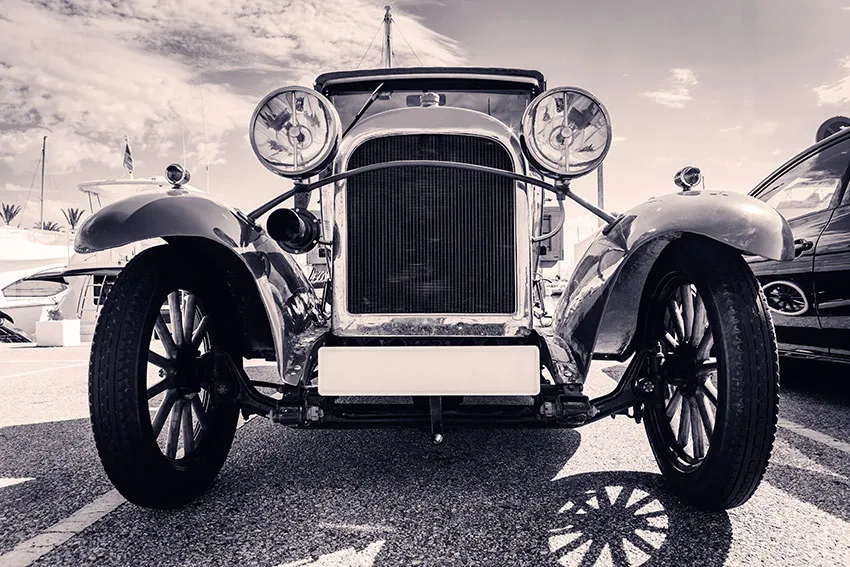Understanding Technical Art in Automobiles
The concept of technical art in automobiles transcends the mere functionality of vehicles, embracing both aesthetic appeal and intricate engineering. A car qualifies as a work of technical art when it harmoniously combines innovative design with exemplary craftsmanship. This intersection of form and function is what elevates certain models into the realm of collectible automobiles, attracting enthusiasts who appreciate not just performance but also the artistry involved in automobile construction.
Iconic cars such as the Ferrari 250 GTO, the Porsche 911, and the Jaguar E-Type exemplify this dual nature of technical art. The Ferrari 250 GTO, for instance, is renowned not only for its racing pedigree but also for its curvaceous and fluid design, which has become a hallmark of automotive beauty. Its handcrafted details and robust performance technology converge to create a vehicle that is revered as a masterpiece. Similarly, the timeless design of the Porsche 911 merges aesthetic elegance with engineering precision, showcasing how design principles can enhance a car’s appeal while ensuring high levels of performance.
Technological innovation plays a pivotal role in defining technical art within automobiles. The use of advanced materials, such as carbon fiber and lightweight alloys, allows for bold design choices without compromising structural integrity. Moreover, the integration of cutting-edge technologies like hybrid powertrains or autonomous driving features signifies a fascinating evolution within the automotive industry. Each of these advancements contributes to the evolution of the collector’s car, demonstrating how vehicles can embody the essence of technical art with each innovation. Through these examples, it becomes evident that the artistry behind automobiles lies not only in their exterior design but also in the underlying engineering principles that enable them to perform at peak levels.
Factors to Consider When Choosing a Collector’s Car
The journey of selecting a collector’s car is both exhilarating and complex and requires careful consideration of several critical factors. First and foremost, the historical significance of a vehicle plays a crucial role in its collectibility. Cars that have made a notable impact in motorsports, technological advancements, or automotive design often command greater interest among collectors. For example, limited-edition models or those that have been featured in films can be especially sought after.
Rarity is another essential aspect in the decision-making process. Collector’s cars that were produced in limited quantities or are no longer manufactured frequently attract attention and potentially increase in value over time. Collectors should research models that are rare due to production constraints or unique features that differentiate them from standard versions. The scarcity of certain vehicles can significantly influence market trends and demand within the collector community.
Additionally, the condition of the car cannot be overlooked. A well-maintained vehicle with original parts is typically more desirable than one that has undergone extensive modifications or restorations. It’s advisable for collectors to closely evaluate a car’s exterior, engine, interior, and undercarriage for signs of wear, rust, and overall maintenance. Documentation proving the car’s maintenance history can also offer insight into its authenticity and preservation efforts.
Provenance, or the history of ownership, is another significant consideration that can enhance a vehicle’s collectibility. Having a traceable and distinguished past can increase a car’s desirability and value in the marketplace. Furthermore, keeping an eye on market trends is vital; trends can shift based on various factors, including economic conditions and emerging collector interests. Collectors should engage in thorough research to ascertain how these factors can impact their potential investment.
Investment Potential of Collector’s Cars
The decision to invest in collector’s cars involves various financial considerations. Historically, certain makes and models have demonstrated significant appreciation potential. For instance, classic models from renowned brands like Ferrari, Porsche, and Lamborghini tend to trend upwards in value, often outpacing traditional investments such as stocks and bonds. Researching market trends is crucial, as it provides insights into past performance, guiding potential investors in making informed choices about which collector’s cars might rise in value.
When evaluating the investment viability of a collector’s car, several factors come into play. The rarity, condition, and provenance of the vehicle are paramount. A limited production number or a meticulously maintained classic can command a premium. Additionally, original documentation and service records can enhance the car’s attractiveness to potential buyers. These factors not only influence immediate desirability but also impact long-term investment returns.
It is essential to account for ongoing expenses related to ownership. Maintenance costs can be high for vintage and performance vehicles, and potential investors should be prepared for regular upkeep to preserve their car’s value. Insurance is another consideration; collector’s car insurance often differs from standard auto insurance and may vary significantly based on the car’s condition and market value. Engaging with specialized insurance providers can ensure both proper coverage and manageable premiums.
Finally, the emotional value of a collector’s car can sometimes outweigh its monetary value. Many enthusiasts find joy in the process of restoration, the thrill of driving a classic, or participating in car shows. While investments in collector’s cars can yield considerable financial returns, it is essential to balance these expectations with the intrinsic pleasures associated with car collecting. A well-rounded approach that embraces both the financial opportunities and the emotional rewards can lead to a more satisfying investment experience.
Building Your Collector’s Car Collection: Tips and Strategies
Creating a well-rounded collector’s car collection requires thoughtful planning and a genuine passion for automotive artistry. One of the first steps in this journey is setting personal goals. Determine what you aspire to achieve with your collection. Are you focusing on particular brands, eras, styles, or even specific engineering feats? Clarifying these parameters can guide your decisions and help you stay focused on building a collection that resonates with you.
Networking within the collector community is another vital strategy. Engaging with fellow enthusiasts can yield valuable insights and potentially open doors to unique acquisitions. Join online forums, local car clubs, and social media groups dedicated to collector’s cars. These platforms allow for sharing knowledge, tips, and even trade opportunities, enriching your interaction with the art of automobile collecting.
Attending car shows and auctions is an essential practice for any serious collector. These events feature an array of vehicles and offer a rich environment for learning about the market’s current trends and values. Visiting shows not only exposes you to rare models and technical masterpieces but also allows you to meet other collectors and industry professionals, further expanding your network. Auctions present opportunities to negotiate and acquire compelling pieces for your collection, sometimes at unexpected prices.
Diversifying your collection broadens your appreciation for technical art cars from various eras and manufacturers. Aim for a mix of classic, vintage, modern, and iconic models to ensure well-roundedness. This variety not only enhances your collection’s aesthetic but also appreciates its value over time.
Ultimately, personal preference should guide your selections. Choose vehicles that ignite excitement and reflect your passion for cars. This approach ensures that the process of collection inspires joy, as each addition tells a story and deepens your relationship with the world of automotive engineering and artistry.


No responses yet